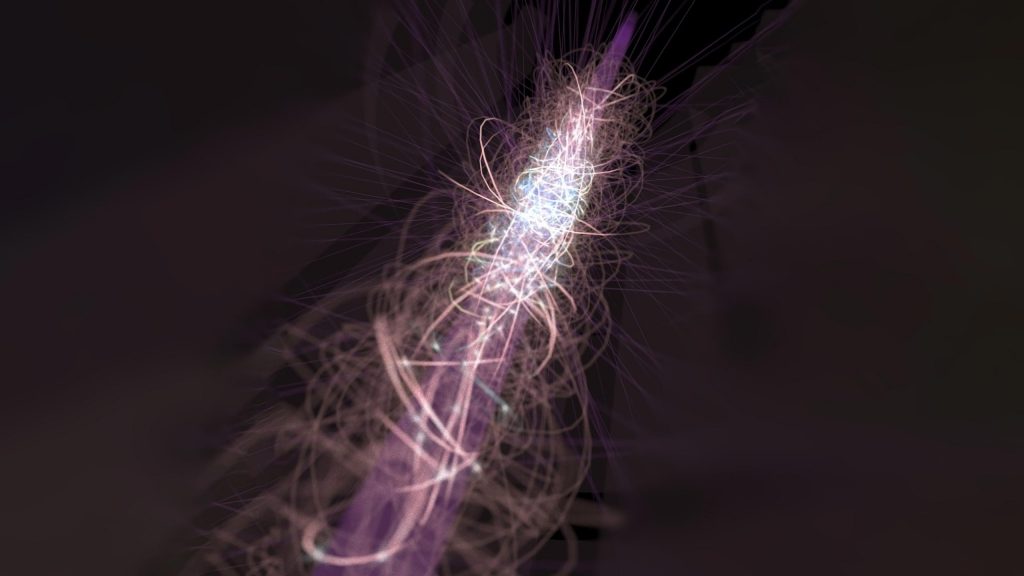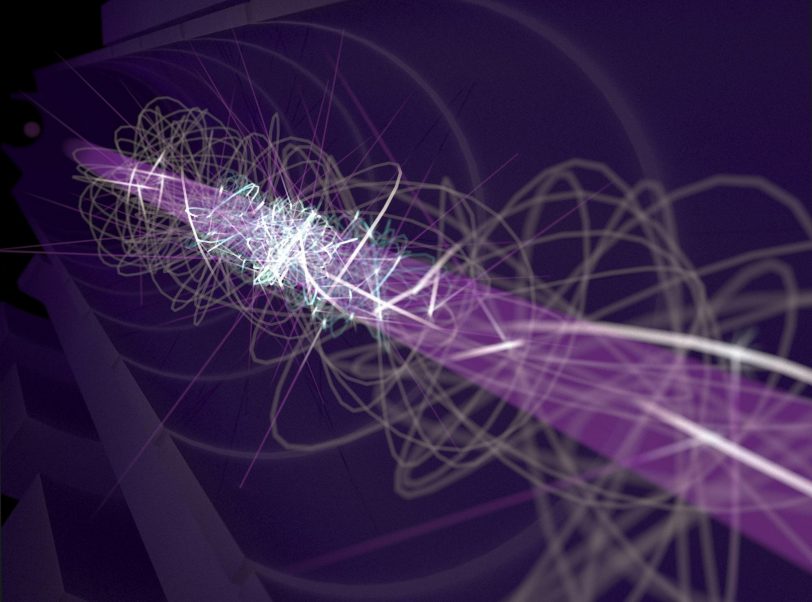Researchers with the CERN-based ALPHA collaboration have announced the world’s first laser-based antimatter manipulation, using a made-in-Canada laser system to cool a sample of antimatter to near absolute zero. The achievement, detailed in an article published and featured on the cover of the journal Nature, will have a significant impact on antimatter research and will pave the way for the next generation of experiments.
Antimatter is the otherworldly counterpart to matter; it exhibits near-identical characteristics and behaviors but has opposite charge. Because they annihilate upon contact with matter, antimatter atoms are exceptionally difficult to create and control in our world and had never before been manipulated with a laser.

“Today’s results are the culmination of a years-long program of research and engineering, conducted at UBC but supported by partners from across the country,” said Takamasa Momose, the University of British Columbia (UBC) researcher with ALPHA’s Canadian team (ALPHA-Canada) who led the development of the laser. “With this technique, we can address long-standing mysteries like: ‘How does antimatter respond to gravity? Can antimatter help us understand symmetries in physics?’. These answers may fundamentally alter our understanding of our Universe.”
Laser manipulation and cooling of ordinary atoms have revolutionized modern atomic physics and enabled several Nobel-winning experiments since its introduction 40 years ago. The results published in Nature are the first time scientists have used these techniques to study antimatter.
By cooling antimatter, researchers will be able to perform a variety of precision tests to further investigate the characteristics of antimatter, including experiments that may shine a light on the fundamental symmetries of our Universe. These experiments can reveal why the Universe is mostly made of matter, rather than the equal parts matter and antimatter predicted by Big Bang models.
“It was a bit of crazy dream to manipulate antimatter with laser,” said Makoto Fujiwara, ALPHA-Canada spokesperson, TRIUMF scientist, and the original proponent of the laser cooling idea. “I am thrilled that our dream has finally come true as a result of tremendous teamwork of both Canadian and international scientists.”
The laser manipulation of antimatter also opens the door to a variety of leading-edge physics innovations. Momose and Fujiwara are now in charge of HAICU, a new Canadian project to develop new quantum techniques for antimatter research. “My next dream is to make a “fountain” of anti-atoms by tossing the laser-cooled antimatter into free space. If realized, it would enable an entirely new class of quantum measurements that were previously unthinkable,” said Fujiwara. “Furthermore, we are one step closer to being able to manufacture the world’s first antimatter molecules by joining anti-atoms together using our laser manipulation technology,” said Momose.
The findings are a turning point in ALPHA’s decades-long antimatter research program, which began in 2011 with the creation and trapping of antihydrogen for a world-record 1,000 seconds. In addition, the collaboration revealed the antihydrogen spectrum for the first time in 2012, established boundaries for the effect of gravity on antimatter in 2013, and demonstrated an antimatter counterpart to a key spectroscopic phenomenon in 2020.
Reference: “Laser cooling of antihydrogen atoms” by C. J. Baker, W. Bertsche, A. Capra, C. Carruth, C. L. Cesar, M. Charlton, A. Christensen, R. Collister, A. Cridland Mathad, S. Eriksson, A. Evans, N. Evetts, J. Fajans, T. Friesen, M. C. Fujiwara, D. R. Gill, P. Grandemange, P. Granum, J. S. Hangst, W. N. Hardy, M. E. Hayden, D. Hodgkinson, E. Hunter, C. A. Isaac, M. A. Johnson, J. M. Jones, S. A. Jones, S. Jonsell, A. Khramov, P. Knapp, L. Kurchaninov, N. Madsen, D. Maxwell, J. T. K. McKenna, S. Menary, J. M. Michan, T. Momose, P. S. Mullan, J. J. Munich, K. Olchanski, A. Olin, J. Peszka, A. Powell, P. Pusa, C. Ø. Rasmussen, F. Robicheaux, R. L. Sacramento, M. Sameed, E. Sarid, D. M. Silveira, D. M. Starko, C. So, G. Stutter, T. D. Tharp, A. Thibeault, R. I. Thompson, D. P. van der Werf and J. S. Wurtele, 31 March 2021, Nature.
No products found.


